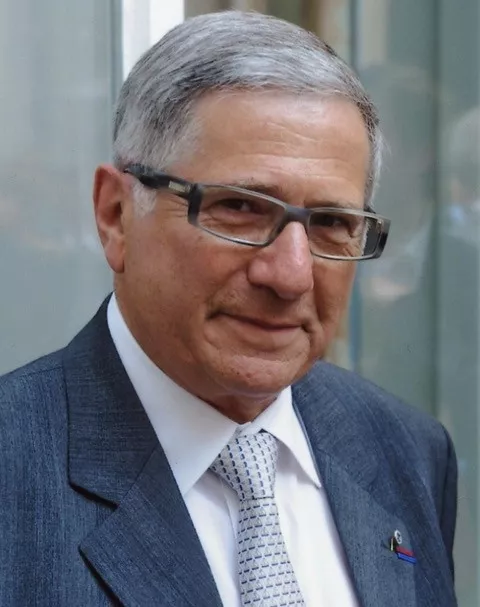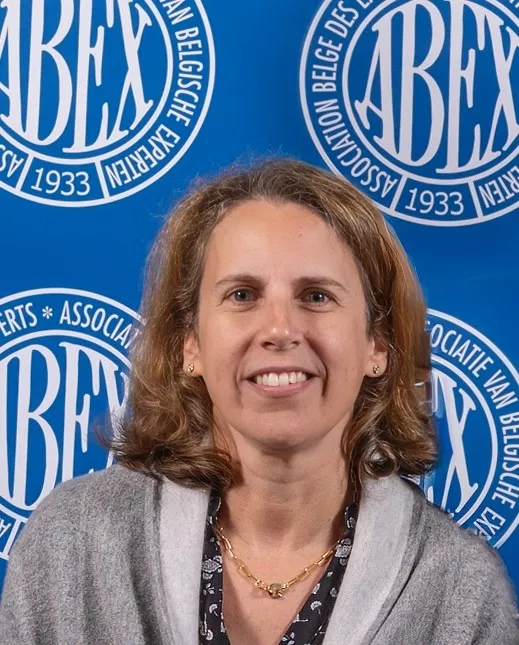In ‘The Faces of the Industry,’ a recurring item in our newsletter, we bring an industry name to the spotlight, one at a time. This person has been nominated by the previous ‘Face of the Industry’ and will appoint the one for the next edition of the Antwerp Diamond Digest.
This time, we had the pleasure of interviewing Eddy Vleeschdrager, a real legend of the Antwerp diamond industry and a diamond expert. A short introduction could never capture accurately all of the things Eddy has accomplished in his 40+ years in the business, so continue reading to get a better idea!
Can you tell us a bit about who you are and what you do in the diamond industry?
Eddy Vleeschdrager: I started as a diamond sawyer and had my own sawing workshop. I also learned cleaving and polishing through evening courses at SITO in Antwerp. Then I went to Idar-Oberstein to study colored stone polishing—rubies, sapphires, spinel, you name it. Then, I moved fully into polishing, first in Nijlen, then Tunis. But even in Tunis, labor costs became too high, so I stopped and turned to trading.
I traded rough and polished diamonds with partners, including AMC. In 2005, I stopped trading and continued with work I'd been doing since the 80s: court-appointed expert evaluations for courts, prosecutors, the World Bank, lawyers, notaries, bailiffs, and more. That’s what I’m mostly doing now, besides working on my books. I have also served as a judge at the Labour Court and later as a Justice at the Labour Court of Appeal Antwerp-Limburg for several decades.
Did you grow up in the diamond industry?
Eddy: I'm the fourth generation. My great-great-grandfather had a diamond mine concession in Kimberley. So yes, I was born into it. At first, I wanted to continue in the arts, I worked in opera set design, but my family persuaded me otherwise, and once I commit to something, I go all in. You really have to be passionate about your work, then you don’t ‘work’ a day in your life.
You’ve also written several books.
Eddy: Yes, I started in the late '80s. My first book was on diamond polishing, published in Dutch, French, and English. Later, it grew into a work of over 1500 pages, even translated into Chinese. I also wrote one on colored gemstone processing, now used in Valenza’s vocational school in Italy. Together with Jan Walgrave and Iris Kockelbergh, I co-authored a book on Antwerp's diamond heritage commissioned by the city when Antwerp was Europe’s cultural capital. My most recent book is Kroniek van het Antwerps Steentje, covering Belgium's diamond industry history from the Belgian independence up until today.
What does a day in the life look like now?
Eddy: It’s very diverse. I do valuations for banks, company stock checks, court cases, etc. I work almost every day, including weekends. I also give lectures in Paris and Brussels and at major trade fairs like Sainte-Marie-aux-Mines. Lifelong learning is key in our fast-evolving field. Even after more than 40 years in the field, I’m still learning every day.
How do you see Antwerp’s role in the diamond world today?
Eddy: Antwerp has changed drastically. From a buzzing hive of 30.000 workers, the market has shrunk, but I’m optimistic about our future. High-end clients are demanding traceability and guarantees. Antwerp, known for its strict standards, is in a strong position. Global hubs like Dubai are introducing taxes and losing appeal, so Antwerp’s transparency and quality may draw business back.
What does the city need to do to regain momentum?
Eddy: We need to promote ourselves better. Right now, events are often held ‘within our own circle.’ We need to reach the public. In the past, public exhibitions attracted hundreds. There’s still appetite for this. We must inspire consumers again, in the end, they’re the ones who drive demand.
Do you see synthetics as a threat to natural diamonds?
Eddy: Not anymore. It’s a separate market. Synthetic diamonds are now less than 1% the value of naturals. What we must prevent is fraud. I regularly receive stones from prosecutors that were sold as natural but turn out synthetic. Proper certification truly matters. I think HRD stopping certifying loose synthetic diamonds in 2026 is the right decision. Labs should only certify natural diamonds. Synthetics are imitations, and certifying them only creates confusion.
What advice would you give to someone entering the industry?
Eddy: If you don’t have connections within the industry, it’s tough. But when you do, yes, it’s possible. There's always room for niche players. I started exhibiting at trade shows in the '80s when few Antwerp diamantaires did, and it helped expand the business. That’s just one of the many examples of bringing innovation to the trade.
How do you see AWDC’s role?
Eddy: AWDC does great work connecting with producing countries. But more should be done externally, to the broader public. We need small, focused delegations, not massive events. And more storytelling: people love hearing where diamonds come from, how they're cut. The 'outside world' is often oblivious to the exact handlings diamonds go through.
Who would you nominate as the next face of the industry?
Eddy: I would like to nominate Florence Nobels, a fellow diamond expert. She’s dynamic, deeply involved, and the daughter of Claude Nobels, former director of De Beers. She’s doing great work.
And finally, what’s your hidden gem in Antwerp?
Eddy: Skip the car and walk. The harbor district, the historic city hall, and the area around Het Steen are must-sees. The neighborhood over there is historic and cosy.




